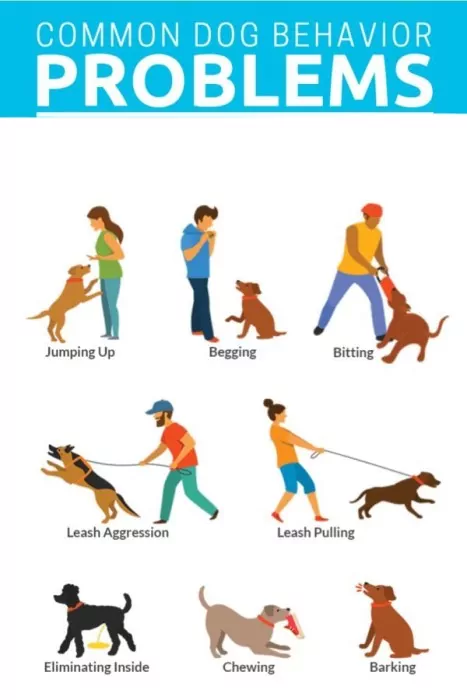Master Necessary Commands: Reliable Canine Educating Facilitated
Efficient dog training is an essential aspect of responsible animal possession, and grasping necessary commands serves as the structure for a harmonious partnership between trainer and dog. Recognizing the subtleties of canine habits and the training procedure is vital; nevertheless, the journey to a well-trained pet typically provides unexpected hurdles that need focus.
Recognizing Your Canine's Behavior
To understand the subtleties of reliable pet dog training, it is important to damage down and evaluate your pet's actions. Dog training. Understanding the inspirations behind your pet's actions is vital; habits can come from impulse, fear, exhilaration, or a desire for attention. By observing your canine in various scenarios, you can recognize patterns that may show underlying feelings or demands
As an example, a canine that barks exceedingly may be revealing monotony, anxiousness, or a requirement for social communication. Alternatively, a dog that displays damaging behaviors may be seeking stimulation or relief from tension. Recognizing these triggers enables you to customize your training approach properly.
In addition, it is crucial to consider the pet's breed features, as they can affect actions significantly. Some types are predisposed to certain characteristics, such as herding or guarding impulses, which can affect their reactions to certain stimuli.
Lastly, consistency in your reactions to your pet dog's behavior cultivates a far better understanding between you and your family pet. This shared comprehension is foundational for constructing trust fund and promoting an efficient training procedure that nurtures both behavioral correction and favorable support.
Crucial Commands to Educate
Teaching crucial commands is a basic facet of reliable pet training, supplying the foundation for a well-behaved and receptive family pet. These commands not only enhance communication in between the owner and the dog yet likewise ensure safety and security in various environments.
The most essential commands include "Sit," which urges your pet dog to remain fixed and calm; "Stay," which strengthens the idea of remaining in one area up until launched; and "Come," which is crucial for recalling your pet dog from possibly harmful scenarios. "Down" instructs dogs to exist down, promoting leisure and control, while "Leave it" helps protect against pet dogs from getting unsafe or unwanted things.
" Heel" is another important command that encourages your pet dog to walk carefully close to you, improving chain manners. Lastly, "No" functions as a crucial boundary-setting command, aiding to correct unfavorable actions.
Training Strategies for Success
Effective pet dog training relies heavily on using a selection of techniques that deal with both the pet dog's learning style and the proprietor's training objectives. One key method declares support, which involves satisfying wanted actions with treats, praise, or play. This technique urges the canine to repeat those habits, cultivating a solid bond in between proprietor and pet.

One more effective technique is remote control training, where a distinct sound, made by a remote control, notes the precise moment a dog performs a wanted activity. This exact timing assists canines associate the habits with the benefit, boosting their understanding.
Consistency is essential in Full Report all training methods. Developing clear commands and maintaining the very same signs helps the pet understanding expectations more swiftly. Furthermore, short, appealing training sessions avoid boredom and rise retention.
Integrating socialization possibilities is likewise important. Exposing pets to different environments, individuals, and other pets helps them establish confidence and flexibility.
Finally, patience plays a substantial function in effective training - Dog training. Each canine learns at their very own speed, and recognizing this can check this site out cause a more delightful training experience for both the owner and the pet dog. Executing these techniques will establish the foundation for reliable dog training
Typical Challenges and Solutions
In spite of the ideal training techniques, canine owners usually encounter typical difficulties that can impede progression. One common problem is incongruity in commands and cues. When family participants make use of various commands for the same behavior, it puzzles the pet, causing irregular feedbacks. The solution lies in establishing a unified method among all household participants, ensuring that everyone uses the same terminology and signals.

In addition, some pet dogs might display stubbornness or absence motivation. This can commonly be resolved by including positive reinforcement strategies, such as deals with or appreciation, to motivate wanted habits. Customizing rewards to what your canine finds most motivating can dramatically enhance their interaction.
Last but not least, anxiety or stress and anxiety can hinder progress in training. Acknowledging indicators of stress and readjusting the training pace accordingly is important. Utilizing gradual direct exposure to feared stimuli can aid develop confidence in time, helping with a much more reliable training experience.
Maintaining Consistency and Patience
Consistency and patience are critical in canine training, as they create the foundation for attaining lasting behavioral modifications. Check Out Your URL Pets prosper on regular and clear assumptions; therefore, preserving a regular approach in commands, incentives, and improvements is essential.
Just as essential is the function of perseverance. Training a canine is not a rapid process; it requires time and rep. Pets, a lot like human beings, have differing learning speeds and may not comprehend commands immediately. Fitness instructors have to identify this and remain tranquil, giving support as opposed to frustration. Favorable reinforcement plays a vital function below, rewarding desired habits and assisting to foster a trusting connection in between the dog and instructor.
Verdict
Grasping vital commands is essential to effective canine training, fostering improved interaction and strengthening positive behaviors (Dog training). Inevitably, a trained pet not just shows good actions however also creates confidence, adding to an unified relationship in between the canine and its proprietor.